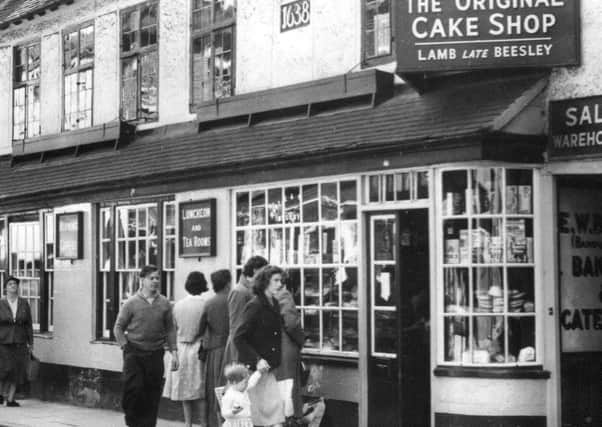Look back with Little: Critical moments along the heritage journey


The first of these (May 9) was the ‘Penalties of Indifference’ by Michael Wright. It was about the fate of Brown’s Café and Cake shop in Parsons Street.
‘The Future of old buildings’ (May 23) is best summed up by the opening sentence; ‘Even today successful conservation depends upon intelligent co-operation’. Without this there is risk of the loss of important buildings which is considerable cause for concern.
Advertisement
Hide AdAdvertisement
Hide AdA local journalist who responded to the old building issue was Doug Golby of the Banbury Guardian. His article of June 27, 1968 carried the significant caption ‘Derelict reminders of former glory’. He began by drawing attention to an important role for the Banbury Historical Society, which was reported as being in the forefront of a move to generate revived interest ‘in the bricks and mortar of yesterday’s industry’.
The late sixties was a time when town development was high on the agenda. Linked considerations were to do with industrial archaeology. This embraced machinery as well as the buildings which housed it.
High on Golby’s list was an old tweed mill which was a dominant feature of canalside. In the article it was described as a ‘gaunt and derelict monument to an age when Banbury’s industry served the world’. This structure was due to be demolished despite the fact that it contributed greatly to the 17th and 18th centuries’ output of quality tweed cloth. Elsewhere in the town looms met the demand for silks and fine Plush weaves.
Buildings such as the one close to the side of the Oxford Canal were often tucked away. Doug discovered them in back alleys and ‘out of sight behind modern frontages’. Typical examples were the shoemaker’s workshop in London Yard where George Herbert worked, and Dunnell’s brewery that was behind North Bar frontages. Numerous water mills used to be scattered along brooks and tributaries of rivers such as the Cherwell and Swere. More easily seen was the Edmund and Kench mill which was on the site of the Bishop of Lincoln’s mill and near the present bus station. Also clearly visible from the canalside used to be Clark’s mill dating from about 1911. A massive fire accounted for this building.
Advertisement
Hide AdAdvertisement
Hide AdPublic inquiries into the future of buildings have not always proved the solution to issues concerning conservation. A classic example was the inquiry triggered by the Brown’s Cake Shop crisis. Guardian reporters left readers in no doubt as to the gravity of the situation. Headlines included ‘£40,000 to preserve’ and the statement ‘Whitehall and a firm of developers clashed yesterday’.
The cake shop is a good example of the need to fully comprehend why Heritage England had given it the status of a Grade II listed building. There was interest beyond the historical association with the world-famous cakes. What also mattered were the 17th century structure and the 18th century shop front and fittings. The partial demolition which occurred was especially unfortunate because it accounted for the structure as well as the exterior characteristics.
With Banbury unlikely to be able to meet the cost of repair it was necessary to consider available grants such as from the Historic Buildings Council. Few people expected these to be adequate. In the event of rebuilding it was important to pose the question, ‘can rebuilding on this scale be deemed preservation? More likely it was an exercise in reproduction. Interestingly, at the inquiry, the representative of Oxfordshire County Council expressed the view that preservation was acceptable unless there was a cost to ratepayers.
Today the issue of heritage matters is likely to arise with increasing frequency as the High Street provides more and more instances of above street level conversion to flats. This can be done in a way which retains links with the past. The rapid rate at which this is happening suggests that the era of living above the shop you own is well and truly over.